
Celebrating Eid. Badroedien Sydow and his wife Azieza inspect a fresh liver after the sacrifice. Photo: Ashraf Hendricks
12 September 2016
Every year Muslims around the world celebrate Eid Al-Adha, also known as the “Festival of the Sacrifice”. The celebration happens at the end of the Hajj, the annual pilgrimage to Mecca in Saudi Arabia. The slaughtering commemorates the moment Ibrahim (Abraham) prepared to slit the throat of his only son, but instead slaughtered a lamb. This was a test of devotion. Today, Muslims slaughter a sheep to symbolise Ibrahim’s sacrifice to God.
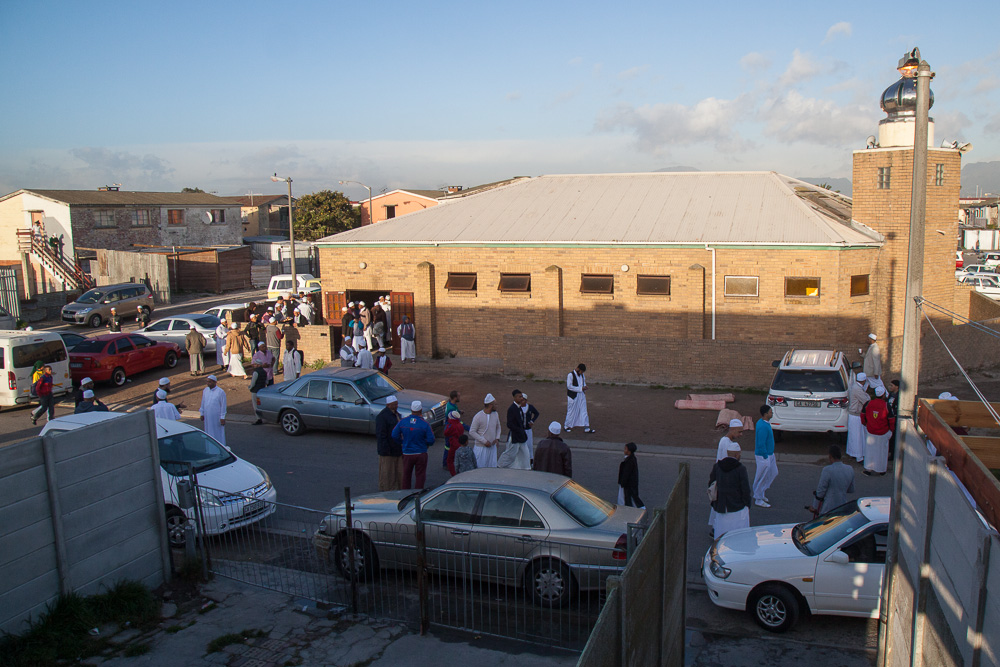
Muslims leave mosque after Eid Prayers at the Seine Road Masjid in Manenberg.
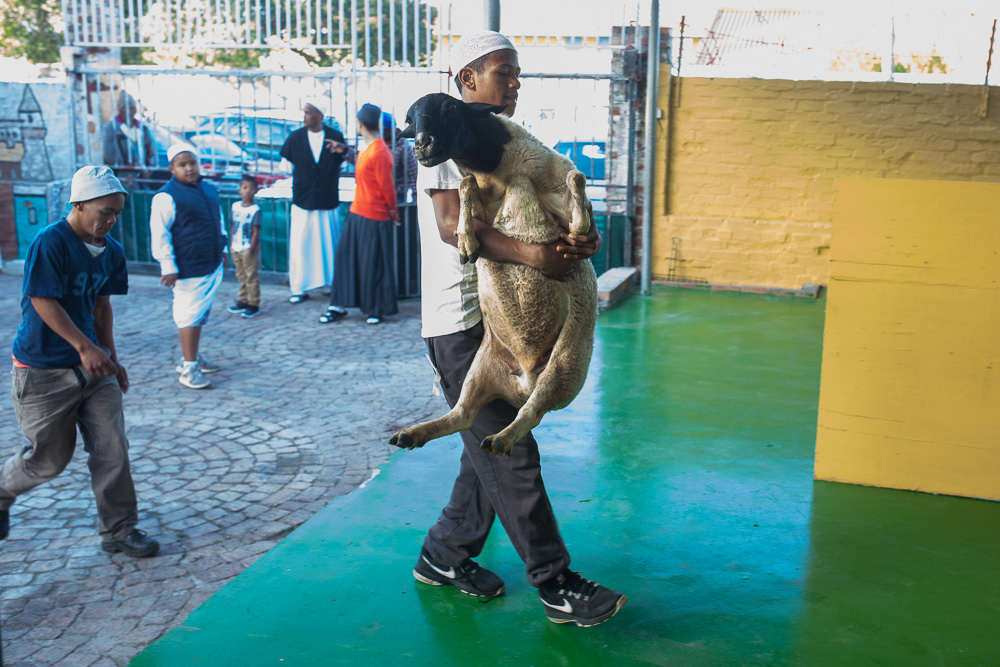
A sheep is carried out to be slaughtered at the Primrose Park Islamic School Courtyard. Today over 300 sheep will be slaughtered.
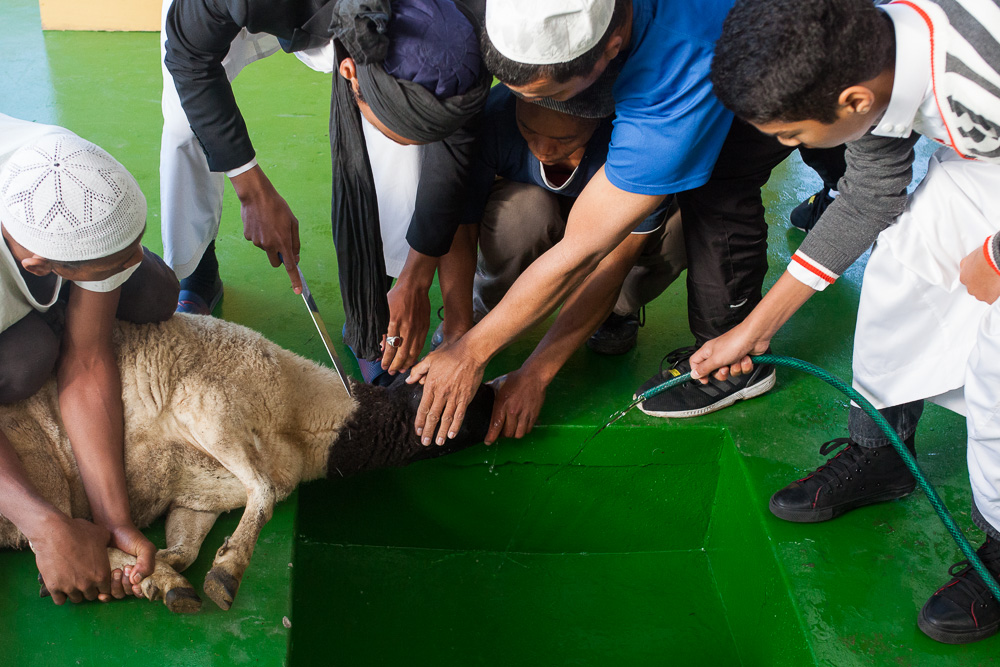
Tayyib Sydow (23) prepares to slaughter for the very first time.
In order for the slaughter to meet Halal standards, the sheep must be healthy, and the animal needs to be blessed. The knife must be sharp, and in one motion the carotid artery, jugular vein and windpipe must be severed.
Traditionally the animal should be kept and taken care of for a few months before the slaughter. This is to create a connection between the person slaughtering and the animal. Due to space and time, this practice is not common anymore.
The carcasses of the sheep are kept out of sight of the sheep still to be slaughtered. Each sheep costs around R1,500 and must be at least one year old. Some Muslims slaughter cows, which cost around R8,000.
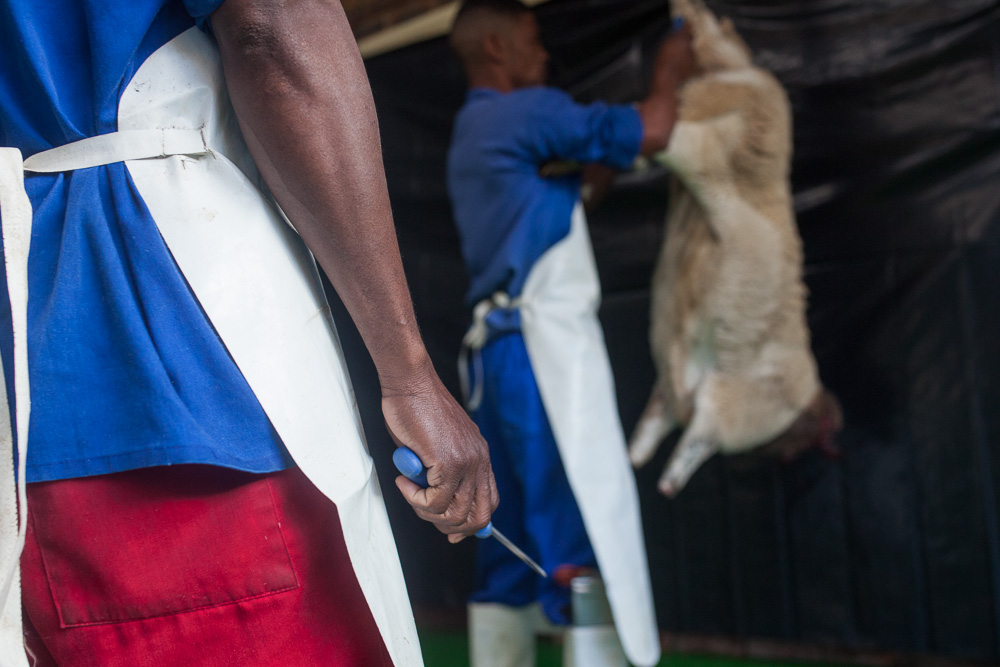
After the sheep’s blood is drained, the head removed and the hooves cut off, the carcass is hung. Here it will be skinned and its insides removed.
Most families only take the meat. The leftover parts, such as the brains, head and stomach, are donated to charity. In most sacrifices at least a third of the meat is given away.
Badroedien Sydow, who paid for the sheep, stopped slaughtering after a bad experience using a blunt knife.
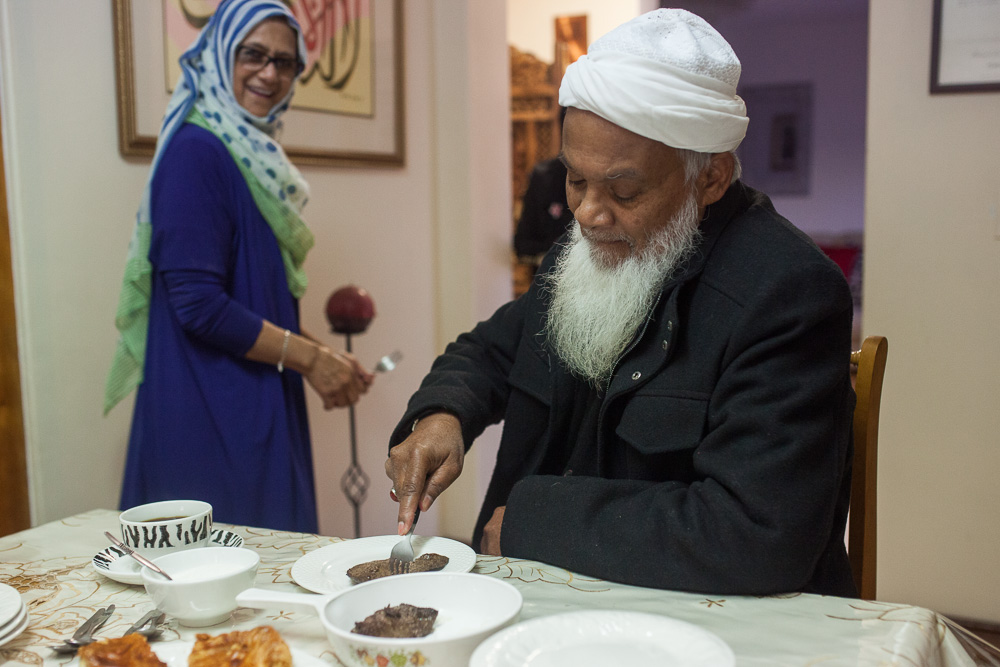
Sydow says he eats the sheep’s liver as the first meal of the day because it is something the Prophet did. His wife Azieza Sydow prepares the liver with salt, pepper and vinegar and fries it for a few minutes.
The rest of the family doesn’t take part in the liver tradition.